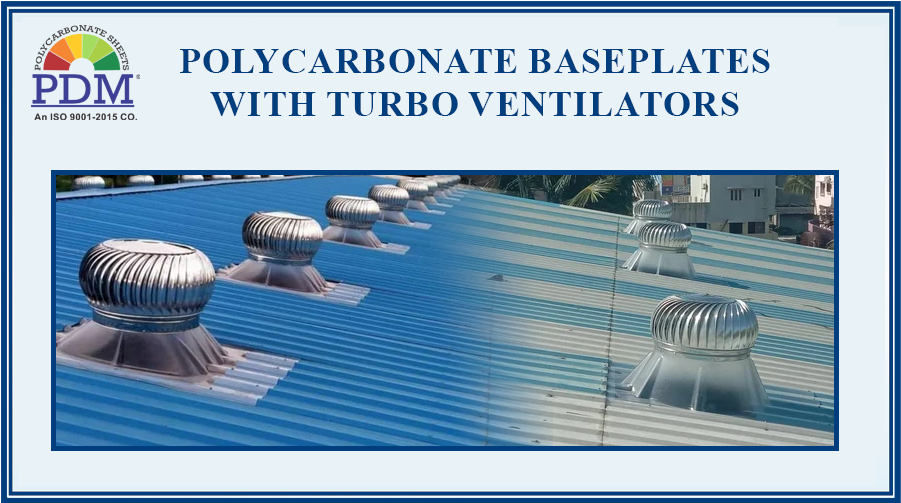In the realm of industrial and commercial environments, managing excessive heat is pivotal for maintaining comfort and operational efficiency. Traditional methods often fall short in achieving optimal cooling without escalating energy costs. However, advancements in technology have introduced a synergistic solution through the integration of polycarbonate baseplates and turbo ventilators, promising enhanced cooling efficacy and significant energy savings.
Benefits of Polycarbonate Baseplates
Polycarbonate baseplates offer multifaceted advantages in heat reduction strategies, making them indispensable components in modern architectural and industrial designs.
Enhanced Light Transmission and Heat Dispersion
One of the primary benefits of polycarbonate baseplates lies in their superior light transmission capabilities combined with effective heat dispersion. Unlike traditional materials, polycarbonate allows natural light to penetrate deeper into spaces while minimizing the absorption of infrared rays. This dual functionality not only brightens interiors but also reduces the overall heat buildup, thereby alleviating thermal stress on structures.
Durability and Longevity
Moreover, polycarbonate baseplates are renowned for their durability and longevity. Engineered to withstand harsh environmental conditions including UV exposure and impact, these baseplates maintain their structural integrity over extended periods. This durability ensures consistent performance in heat reduction strategies without compromising on reliability or maintenance costs.
Advantages of Turbo Ventilators
Turbo ventilators complement polycarbonate baseplates by enhancing airflow dynamics within confined spaces, thereby optimizing the cooling process through natural ventilation.
Efficient Air Circulation
The key advantage of turbo ventilators lies in their ability to facilitate efficient air circulation without the need for electrical power. By harnessing the principles of convection, these ventilators expel hot air and draw in cooler air from outside. This continuous airflow not only reduces indoor temperatures but also improves air quality. Creating a healthier and more comfortable environment for occupants.
Energy Savings
Furthermore, turbo ventilators contribute significantly to energy conservation initiatives. By relying on natural wind energy and thermal differentials. These devices operate independently of electricity, thereby reducing dependency on conventional cooling systems. Studies indicate that buildings equipped with turbo ventilators can achieve energy savings of up to 30% annually compared to those relying solely on mechanical cooling methods.
Synergy of Polycarbonate Baseplates and Turbo Ventilators
The synergy achieved by combining polycarbonate baseplates with turbo ventilators amplifies. Their individual benefits, resulting in a holistic approach to heat reduction and energy efficiency.
Combined Cooling Efficiency
When integrated, polycarbonate baseplates enhance the effectiveness of turbo ventilators by optimizing the dispersion of natural light and heat. This collaboration maximizes cooling efficiency by reducing the overall thermal load on buildings, particularly during peak daylight hours. Studies have shown that this combined approach can lower indoor temperatures by 5-7°C on average, significantly enhancing occupant comfort and productivity.
Case Studies and Data Insights
Real-world applications demonstrate the compelling impact of this combined approach. For instance, a manufacturing facility in Texas reported a 25% reduction in cooling costs after installing polycarbonate baseplates and turbo ventilators. Similarly, data from a commercial office building in Singapore revealed a 15% decrease in overall energy consumption following the integration of these technologies. Such case studies underscore the practical benefits and financial returns associated with adopting integrated cooling solutions.
Conclusion
In conclusion, the integration of polycarbonate baseplates with turbo ventilators represents a paradigm shift in sustainable building practices, offering tangible benefits in heat reduction and energy efficiency. By harnessing natural light, optimizing airflow, and leveraging durable materials. This synergistic approach not only enhances comfort but also contributes to environmental stewardship. As industries and architects continue to prioritize sustainability. These innovative solutions pave the way towards greener, more resilient infrastructure for future generations.



